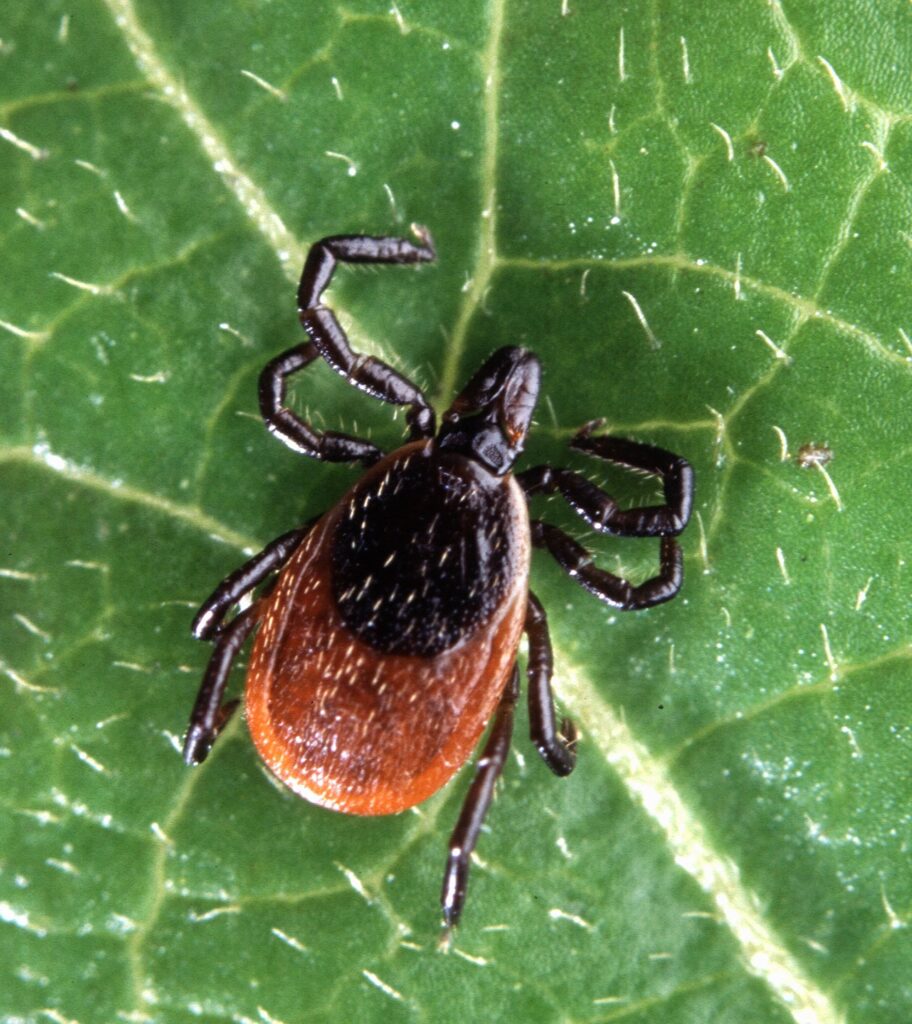With six more weeks of winter ahead of us (according to Punxsutawney Phil: https://abcnews.go.com/US/punxsutawney-phil-predicts-weeks-winter-shadow-virtual-ceremony/story?id=75630462), you may be wondering if that flea and tick preventive is really necessary for the next few months. You are diligent about using it during the summer months, when your pup (or feline friend) is outside in the woods or on the beach, but what about when there is snow on the ground? Do we need it then? What happens if I don’t use any preventives? Read to find out!
Year round Flea and Tick Preventives are Key
Unfortunately, the answer is yes! You do need all preventives on board all year round, especially in New England. Although you may note fewer insects about in the winter, ticks can (and are) out every time the temperatures reach above freezing. They are probably the most hungry this time of year and bite without hesitation. Mosquitos are the insects which carry heartworm disease, and these guys are sneaky, and can even bite in the winter.

The black-legged tick or deer tick is the carrier of Lyme disease, a disease which affects animals and people!
Common Tick Borne Diseases
The most common tick borne diseases in our pets are lyme disease, erlichiosis, and anaplasmosis.
Lyme disease
What is lyme disease?
Lyme disease is caused by a bacteria (Borrelia burgdorferi) carried by the black legged tick. Most people have heard of this disease due to it’s rapid increase in human cases over the last 10 years. In humans, Lyme disease is a difficult disease, sometimes with chronic consequences. This is also true of our canine friends, however it looks a little different. Your pet cannot transmit Lyme to you and you cannot transmit it to your pet. You must be bitten by a tick in order to contract the disease. Lyme disease is very uncommon in cats, so we mostly worry about dogs.
How it affects your dog
After being bitten by a tick, the bacteria makes its way out of the tick and into your pet’s blood. This takes a few hours to do. From there, it likes to camp out in the kidneys and joints. Dogs do not acquire the ‘bullseye’ skin rash that people do, making it harder to spot. Lyme disease often goes undetected early on (sometimes for years!). Signs of lyme disease in dogs include limping, especially limping that changes legs, fever, vomiting, increased thirst and urination, and a decreased appetite. Eventually, it can cause so much kidney damage, that the poor pup goes into kidney failure and cannot be saved.
Monitoring and treatment
The best way to monitor for lyme disease in your pet is to look for it on the 4Dx heartworm tests that your veterinarian recommends regularly. Your veterinarian will likely recommend additional testing to confirm infection if your pet comes up positive on this test. Once confirmed, your veterinarian will recommend treatment with an antibiotic called doxycycline for 1 month. This is a long course with a rough antibiotic, so we strongly recommend testing prior to treatment. Follow up testing may be performed in the next one to six months to ensure treatment was successful. Because the damage to the kidneys can be subtle, your veterinarian may recommend annual blood work to monitor for any changes. Many dogs that are treated early will resolve with no chronic issues.
As with any disease, the best treatment is prevention! Please reach out to your veterinarian for preventatives today!
Erlichiosis and Anaplasmosis
Erlichi-what?
Ehrlichiosis and anaplasmosis are both tick borne diseases that affect dogs and cats similarly. Ticks, this time the Brown Dog tick, transmit these diseases. Unfortunately, the tick does not need to be latched on very long (unlike lyme disease) to transmit the disease. These diseases can be (and are!) seen in cats.
Signs of Ehrlichiosis and Anaplasmosis
There are three phases of disease: acute, subclinical, and chronic. Each has it’s own set of signs. Many times, we diagnose pets in the acute phase which occurs within weeks of the tick bite. Pets will not eat as well, have a fever, have swollen lymph nodes, and can even have bleeding disorders! These bacteria can inhibit blood cell production, leading to the inability to clot. After two to four weeks, the infection may resolve, or enter the subclinical phase. Sometimes, your pet will show subtle signs or no signs at all during the acute phase.
During the subclinical phase, the only abnormality that we see is on blood work, or if bleeding is prolonged during surgery.
The chronic phase comes next. In dogs and cats that do not overcome the disease, over months to years, these pets will develop problems with the joints, nervous system, eyes, and ability to clot. These patients are often critical and can pass away even with the best medical care.
Monitoring and treatment
Similar to lyme disease, the annual 4Dx test is the best way to monitor for these diseases. The best prevention is year-round flea and tick preventives, even in indoor cats. Similar to lyme disease, treatment is a course of antibiotics and regular blood monitoring to ensure there are no flare-ups of the disease.
Bartonella (aka cat scratch fever)
Bartonella is probably the most important reason your cat should be on flea and tick preventives, even if he only lives indoors. This disease can affect dogs too, but is primarily found in cats. Cat scratch fever, or Bartonella henselae is found in up to 40% of all shelter cats. This is a bacteria transmitted by fleas or by direct blood-to-blood contact (e.g. when cats fight). Cats are asymptomatic or have a fever that resolves after 3-4 days.
How is Bartonella transmitted?
You may be wondering, if your shelter cat already probably has this disease, why do you need flea preventatives now? Despite it’s nickname (cat scratch fever), it is not the scratch itself which transmits disease, but fleas. Fleas feast on your cat’s skin and blood, and leave their Bartonella riddled droppings all over her fur and nails. This is called ‘flea dirt’. If your cat scratches you with flea dirt under her nails, you then will become infected. If your cat, even if she is positive for Bartonella, scratches you without flea dirt, then she cannot transmit this disease to you. This is especially important for immunocompromised individuals, where bartonellosis is fatal.
Treatment
Bartonella is very difficult to treat. We cannot completely clear it from your dog or cat, and treatment only makes clinical signs (especially in dogs) better. The best way to keep yourself safe is (you guessed it) flea and tick preventives, year round.

Heartworm Disease
Last but not least is heartworm disease. Heartworm disease is a worm that camps out in your dog’s pulmonary arteries (the vessels that leave the heart and go into the lungs to get more oxygen). When the dog dies, the worms fall back into the heart, hence the name heartworm. This disease can be fatal and is difficult to treat. The longer it sits in your dog, the more damage the heart and lungs have.
Preventing heartworm disease
Dogs first get heartworm from a mosquito bite. This allows the microfilaria (baby heartworms) to get into your dog’s blood stream. The heartworm then goes through multiple stages until it reaches adulthood in the pulmonary arteries. The monthly heartworm preventives that you give your pup will kill the last 30 days worth of babies. It does not protect against future infection, but rather, kills the babies that your dog already has. Thankfully the babies do not do any harm themselves, only the adults.
Treating adult heartworms
Treating heartworm disease is not fun. It starts with a lot of diagnostic testing, including a confirmation test, x-rays, a red blood cell count, and possibly a urine test. Your veterinarian uses all of this information to evaluate the severity of disease.
Once confirmed, your dog will need to be on an antibiotic for 1 month to kill the heartworm’s good bacteria (this helps reduce the risk of complications later). Then, your pup receives an injection of an anti-heartworm medication. This injection is painful and your pup may be sore for a few days afterwards. Your vet will hospitalize your best friend every time, since this is when the risk is highest for sudden death or allergic reaction. Your vet may even start her on steroids. We repeat this process again two more times. Finally, after some tests, your dog can be a dog again and play! You must rest your dog for 8 months during this process.
Treating heartworm disease costs between $1,000 and $2,000. This is the equivalent of roughly 10 year’s worth of preventives.
What about cats?
In cats, heartworm disease is rare, but always fatal. Cats are so small, they can only host one or two worms. These worms eventually cause cats to have lung damage, rather than heart damage. There is no way to treat a cat’s heartworm disease, except open heart surgery. Prevention is the only way to keep your cat healthy! Cats cannot transmit heartworm disease, even when bitten by a mosquito.
Alright, let’s talk preventives now
Now that we have scared you into using flea and tick preventives, along with heartworm preventives, let’s talk about the types.
Flea and tick preventives
There are two major categories of flea and tick preventives: oral and topical.
Oral flea and tick preventives tend to be more convenient, as they are formulated as a treat. They work by killing the tick that bites your dog, rather than preventing bites. They kill the tick before it can transmit diseases and prevents the tick from biting you. Most oral preventives need to be given every 30 days, so set your calendar! Bravecto is a new product for dogs that only needs to be given once every 3 months.
Topical medications often work by preventing tick bites. These are most common in cats, and also work well for dogs with food allergies. You also need to put these on every 30 days, with the exception of Bravecto (every 3 months for dogs, every 2 months for cats). Another topical medication of note is the flea and tick collar. These are very cost effective ways of preventing tick and flea bites! Seresto is our favorite brand; it works well for multiple months! The benefit of the Seresto collar is that it can be used in conjunction with the oral preventives, for dogs that spend a lot of time outdoors.
Heartworm preventives
Most heartworm preventives chews you give once every 30 days, similar to the flea and tick preventives. There is one injectable version which lasts for 12 months (ProHeart 12). Both work very well for preventing heartworm. The chews often come with an intestinal parasite protection as well, so in high-parasite areas, we prefer these.
Where to get them
Your veterinarian will carry the preventives they believe work the best for your area. Some preventatives are over the counter (e.g. Seresto), so you may find something at your pet store. Many over the counter preventatives are not as effective or as safe, so please talk to your veterinarian about your pet’s specific needs before trying these over the counter products.
We sell our products on our online store: https://allcreaturesvethospital6.securevetsource.com/site/view/site/view/HomeDelivery.pml?retUrl=http://allcreaturesvethospital6.vetsourcecms.com&cmsTitle=All%20Creatures%20Veterinary%20Hospital
It’s delivered right to your door!








